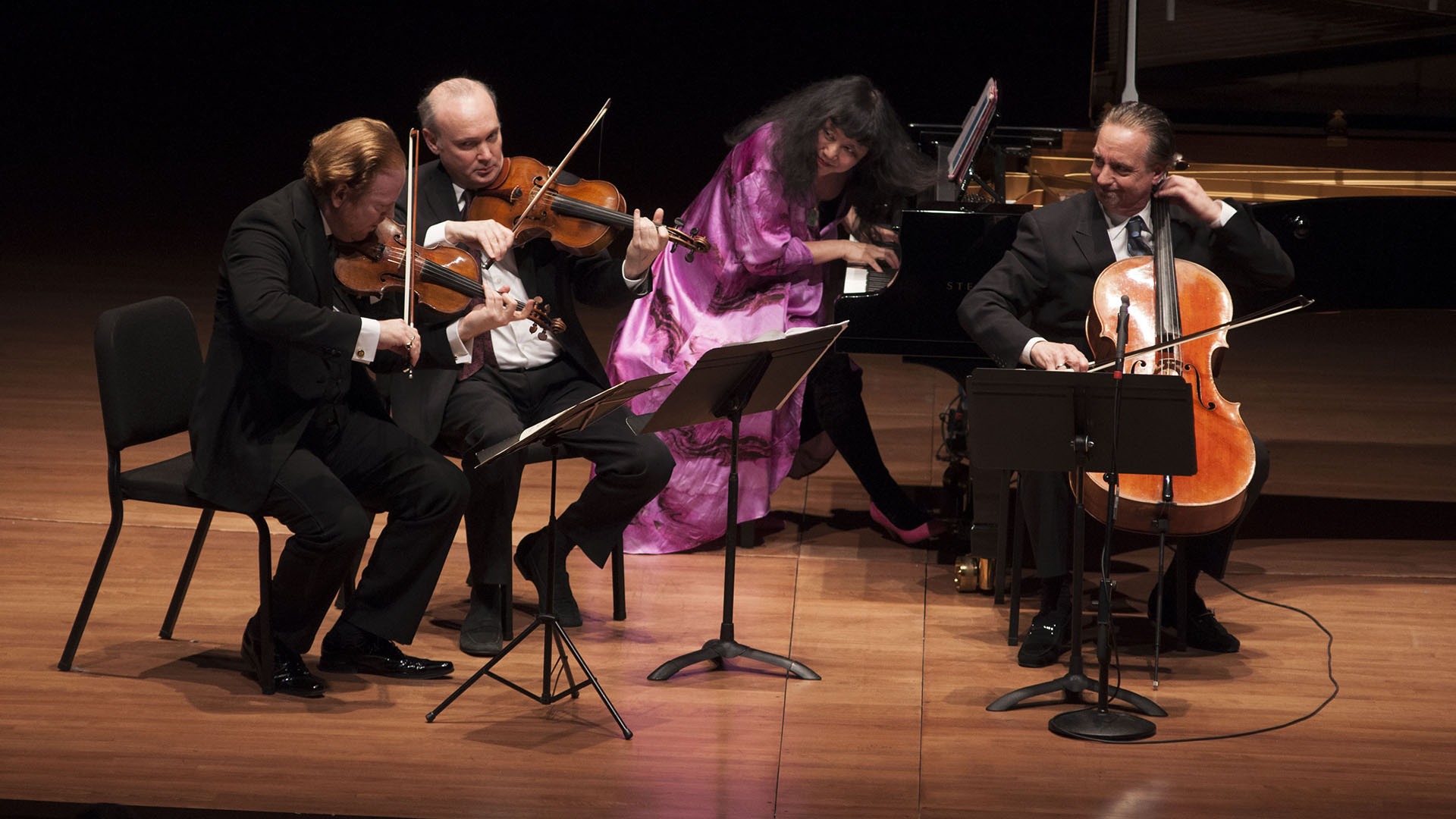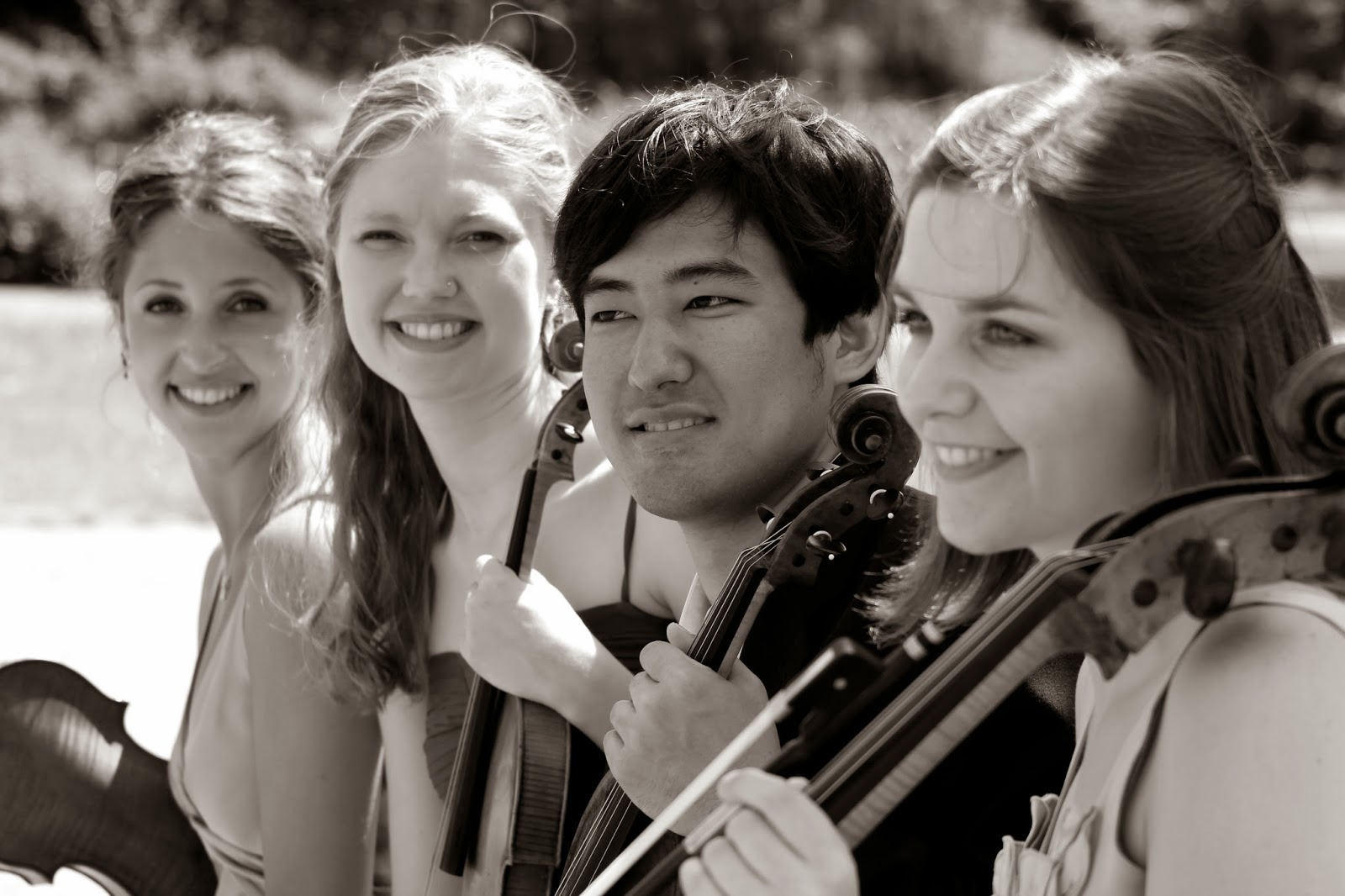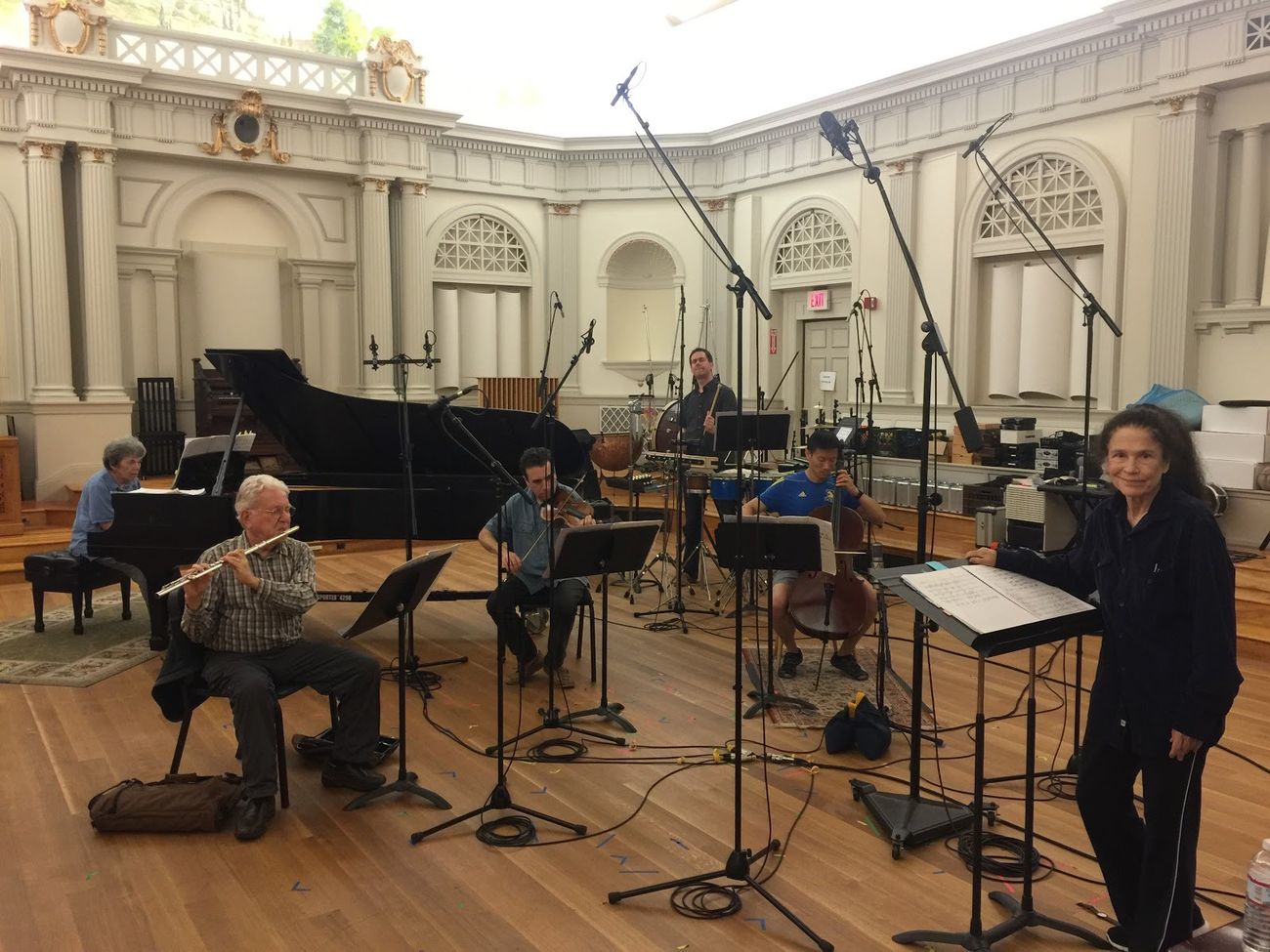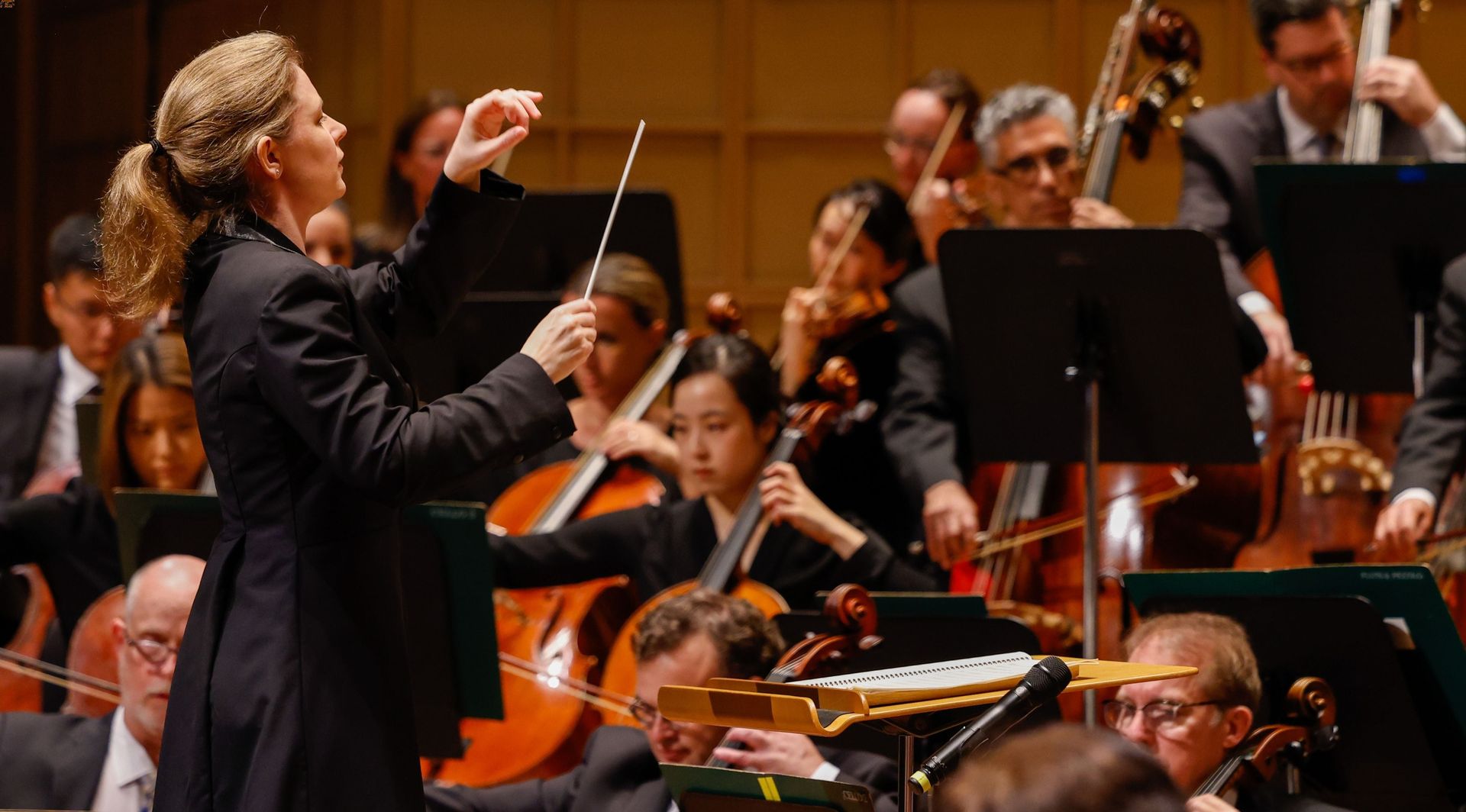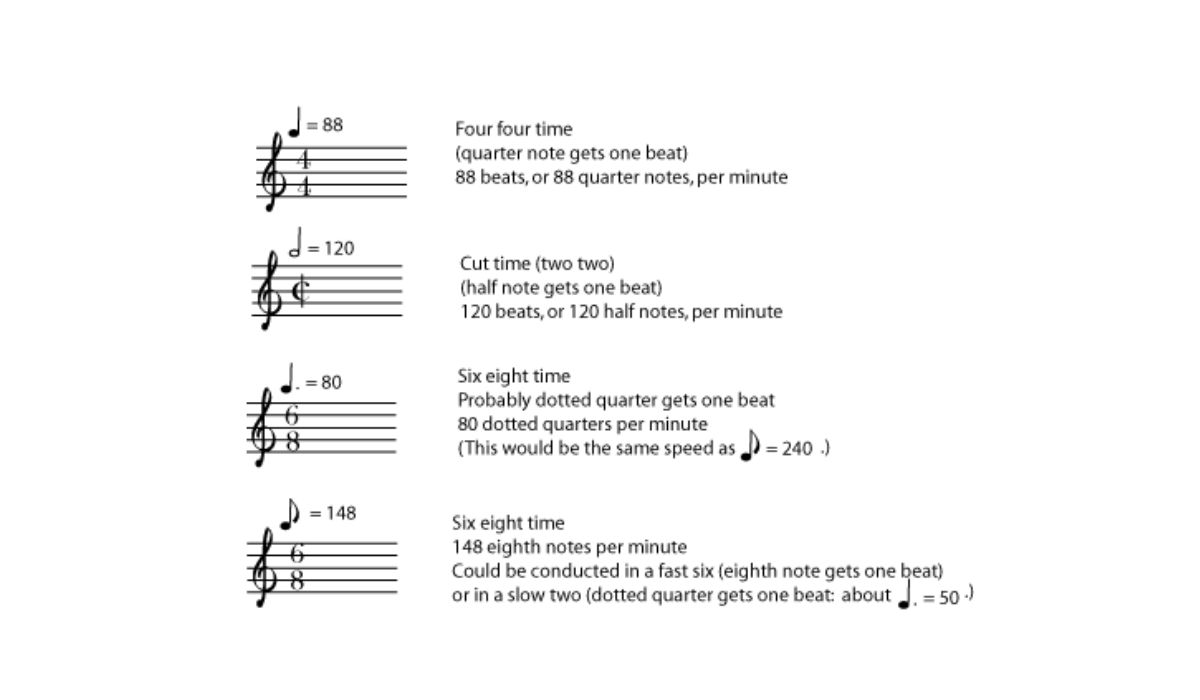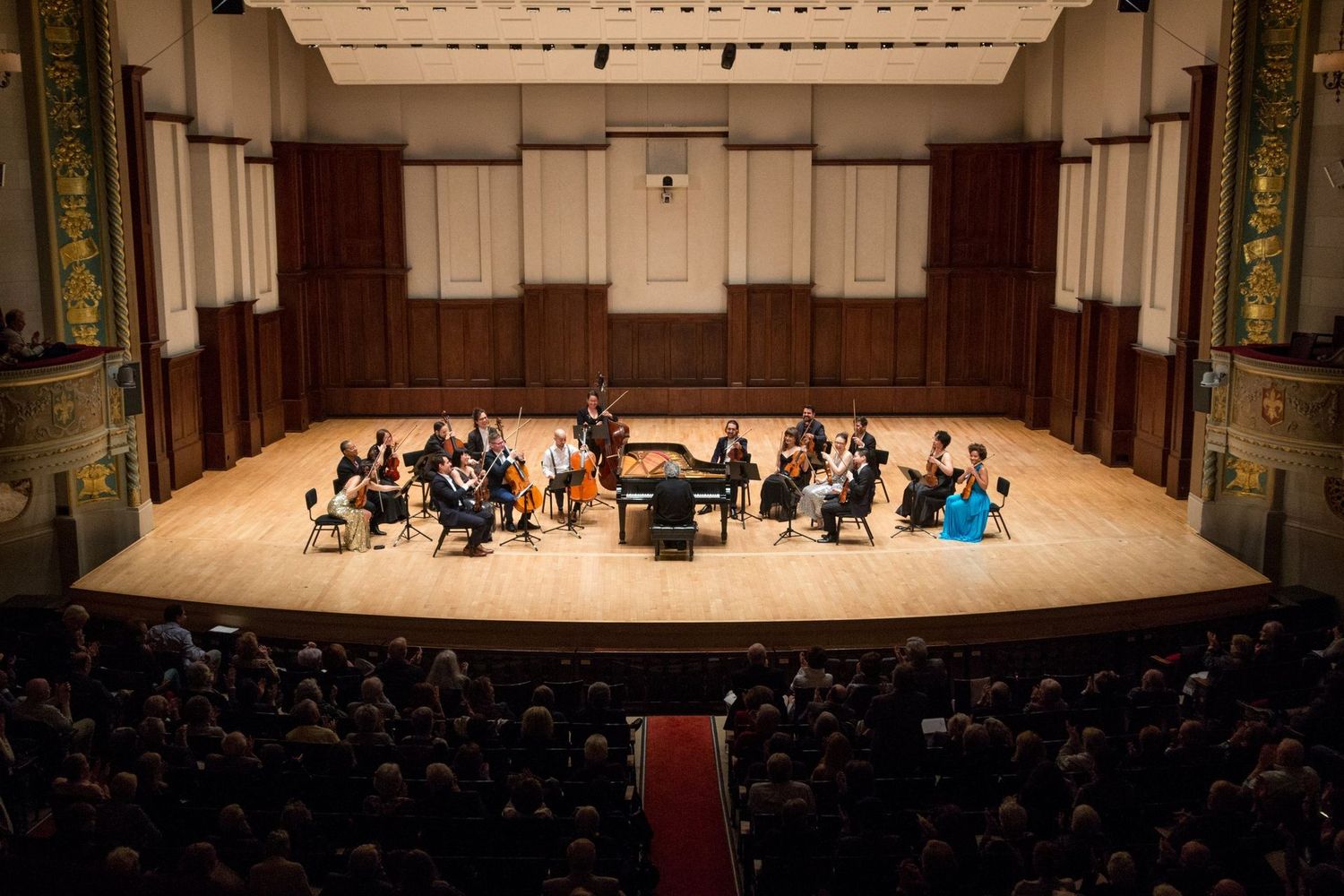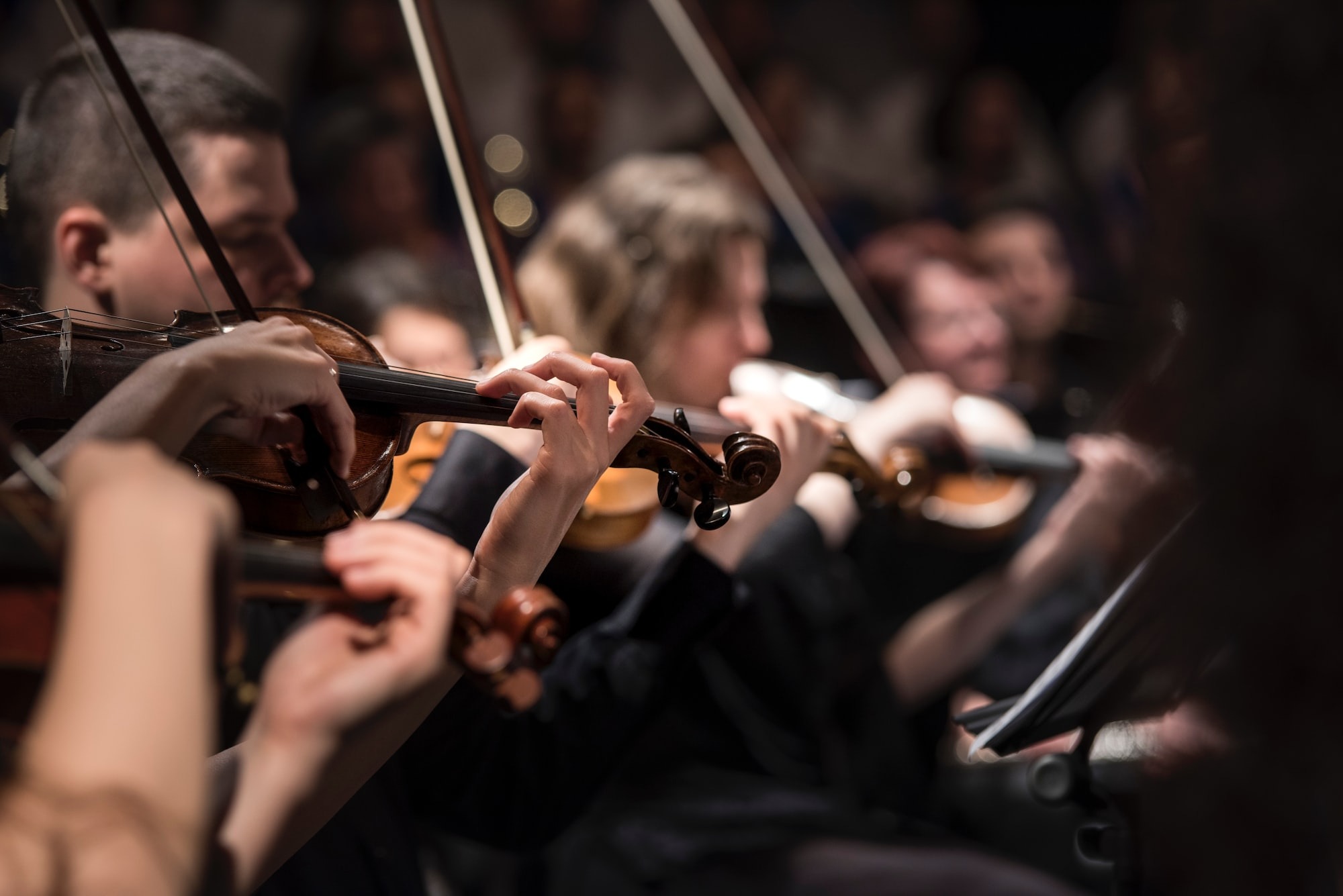Home>Events & Info>Chamber Music>How Chamber Music Is Related To Jazz
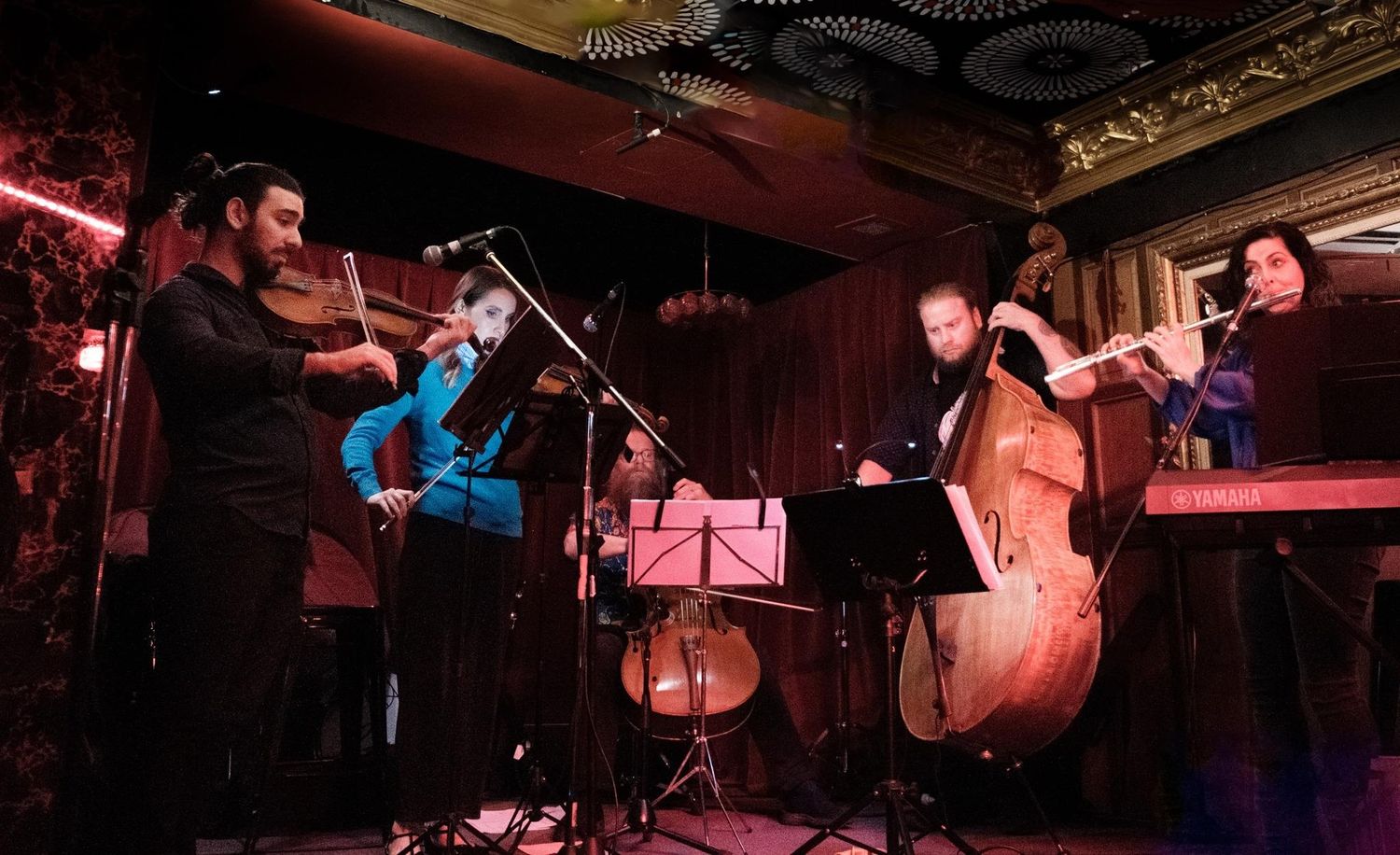

Chamber Music
How Chamber Music Is Related To Jazz
Modified: January 22, 2024
Explore the captivating relationship between chamber music and jazz, as these two genres intertwine to create a unique and harmonious musical fusion.
(Many of the links in this article redirect to a specific reviewed product. Your purchase of these products through affiliate links helps to generate commission for AudioLover.com, at no extra cost. Learn more)
Table of Contents
- Introduction
- The Origins of Chamber Music
- The Origins of Jazz
- Characteristics of Chamber Music
- Characteristics of Jazz
- Common Elements between Chamber Music and Jazz
- Historical Connections between Chamber Music and Jazz
- Influence of Chamber Music on Jazz
- Influence of Jazz on Chamber Music
- Contemporary Interpretations and Collaborations
- Conclusion
Introduction
Chamber music and jazz may seem like two genres of music that couldn’t be more different. Chamber music is known for its elegance, refined melodies, and intimate settings, while jazz is often associated with improvisation, syncopated rhythms, and energetic performances. However, these two genres share a surprising number of connections and have influenced each other throughout history.
Chamber music originated in the 17th and 18th centuries and was typically performed in small, private rooms or chambers, hence its name. It is composed for small ensembles, usually featuring one player per part, such as string quartets, piano trios, or woodwind quintets. The music is intricately composed, with a focus on interplay and dialogue between the instruments.
Jazz, on the other hand, emerged in the late 19th and early 20th centuries in African-American communities, particularly in New Orleans. It is characterized by its improvisational nature, where musicians spontaneously create melodies and rhythms on the spot. Jazz often features complex harmonies, syncopated rhythms, and a wide range of expressive techniques.
Despite their apparent differences, both chamber music and jazz share common elements. Both genres place a strong emphasis on individual expression and musical conversation. In chamber music, each instrument has a distinct voice and contributes to the overall musical dialogue. Similarly, in jazz, each musician takes turns improvising and responding to each other’s ideas, creating a unique musical conversation.
Another commonality between chamber music and jazz is the intimate and communal experience they provide. In chamber music, the small ensemble allows for a close interaction between the musicians and the listeners, often in smaller venues or even private homes. Jazz, originally performed in small clubs and bars, also fosters a sense of intimacy and connection between the musicians and the audience.
Throughout history, there have been significant connections and influences between chamber music and jazz. In the early 20th century, classical composers such as George Gershwin and Maurice Ravel started incorporating jazz elements into their compositions, blurring the boundaries between the two genres. Similarly, jazz musicians like Duke Ellington and John Coltrane drew inspiration from the harmonic complexities and formal structures of chamber music.
In recent years, there has been a resurgence of interest in exploring the connections between chamber music and jazz. Musicians and ensembles are collaborating and adapting chamber music repertoire with a jazz sensibility, resulting in fresh interpretations and innovative performances. These collaborations showcase the versatility and adaptability of both genres, breaking down traditional boundaries and creating new musical experiences.
In this article, we will explore the origins, characteristics, and historical connections between chamber music and jazz. We will also delve into the influence of chamber music on jazz and vice versa. Additionally, we will discuss contemporary interpretations and collaborations that showcase the symbiotic relationship between these two genres. So, sit back, relax, and let’s embark on a journey to discover the fascinating world where chamber music meets jazz.
The Origins of Chamber Music
The roots of chamber music can be traced back to the Baroque period in the 17th and 18th centuries. During this time, chamber music was primarily composed for small ensembles, consisting of instruments such as the violin, cello, viola da gamba, harpsichord, and flute. The term “chamber music” itself refers to music that was performed in small, private chambers or rooms, usually for the enjoyment of a select audience.
One of the earliest forms of chamber music was the trio sonata, which typically featured two melody instruments, such as violins, and a basso continuo, which included a bass instrument like the cello or bassoon and a harmony instrument like the harpsichord or organ. The trio sonata form provided a platform for composers to experiment with intricate musical interactions and complex harmonies.
In the Classical era, chamber music took on a more refined and structured form. The rise of the string quartet became particularly prominent, consisting of two violins, a viola, and a cello. Composers like Joseph Haydn, Wolfgang Amadeus Mozart, and Ludwig van Beethoven elevated the genre to new heights, creating masterpieces that showcased the expressive capabilities of this ensemble.
Chamber music was often performed in intimate settings, such as salons, drawing rooms, or small concert halls. These venues provided an opportunity for the audience to experience the music up close, allowing for a more direct and personal connection to the performers. The smaller space also allowed for subtle nuances and intricate details in the music to be appreciated by attentive listeners.
The composition and performance of chamber music required a high level of skill and virtuosity from the musicians. The ensemble had to work together as a cohesive unit, with each instrument having its own distinct voice and contributing to the overall musical conversation. This emphasis on interplay and dialogue between the instruments created a dynamic and engaging experience for both the performers and the audience.
Chamber music also played a significant role in the development of musical forms and techniques. Composers often used chamber music as a testing ground for new ideas and innovations. The small ensemble allowed for experimentation with complex harmonies, intricate counterpoint, and thematic development. These advancements in composition techniques would later influence larger orchestral works and other genres of music.
Overall, the origins of chamber music can be traced back to the Baroque and Classical eras, where it flourished as an intimate and refined genre. Its emphasis on small ensemble dynamics, intricate compositions, and intimate performances continues to captivate audiences to this day.
The Origins of Jazz
Jazz, a genre deeply rooted in African-American culture, emerged in the late 19th and early 20th centuries. Its origins can be traced back to the fusion of African rhythmic traditions, European harmonic concepts, and influences from various musical styles like ragtime, blues, gospel, and marching band music. Jazz originated in the vibrant musical communities of New Orleans, particularly in African-American neighborhoods such as Storyville.
Due to its multicultural origins, jazz is often referred to as “America’s classical music” and is recognized as one of the country’s greatest cultural contributions to the world. Its earliest form can be characterized by its syncopated rhythms, expressive improvisation, and energetic performances.
One of the key factors in the development of jazz was the interaction between African and European musical traditions. African musical traditions brought forth the complex rhythmic patterns, polyrhythms, and call-and-response techniques that became essential elements in jazz. European music contributed harmonic structures, melodic concepts, and instrumental techniques.
Ragtime, a popular musical style in the late 19th century, heavily influenced the development of jazz. Ragtime featured syncopated rhythms and lively melodies, played on the piano. Musicians like Scott Joplin contributed to the fusion of ragtime with the improvisational and lively aspects that would later define jazz.
Another significant influence on jazz was the blues. Originating in African-American communities, the blues expressed deep emotions and narratives of struggle and resilience. Jazz incorporated the blues’ expressive melodies and chord progressions, which provided a foundation for improvisation and individual expression.
Jazz gained popularity through its association with dancing, as it was often performed in bars, speakeasies, and dance halls. Musicians would accompany dancers with their lively rhythms and melodic improvisations. This connection to dance contributed to the energetic and rhythmic nature of jazz.
New Orleans, with its vibrant music scene and diverse cultural influences, was at the forefront of jazz’s development. Musicians such as Louis Armstrong, Jelly Roll Morton, and Sidney Bechet brought their unique styles and innovations to the genre. These early jazz pioneers laid the groundwork for the improvisational nature of jazz and established its distinct sound.
As jazz spread across the United States and the world, it continued to evolve and assimilate influences from other musical styles. Swing, bebop, cool jazz, modal jazz, and fusion are just a few of the many subgenres and styles that jazz has embraced over the decades.
Today, jazz remains a dynamic and ever-evolving genre, celebrated for its artistic expression, virtuosity, and cultural significance. Its origins in African-American communities and its ability to embody a wide range of emotions and musical ideas have solidified jazz’s place as a unique and influential genre in the history of music.
Characteristics of Chamber Music
Chamber music is known for its distinct characteristics that set it apart from other genres. These characteristics contribute to the intimate and refined nature of chamber music performances. Here are some key features of chamber music:
Small Ensemble: Unlike orchestral music, which involves large ensembles, chamber music is performed by a small group of musicians. The most common chamber music ensembles include string quartets, piano trios, and woodwind quintets. The small ensemble creates a sense of intimacy, allowing for intricate musical interactions and close communication between the musicians.
One Player per Part: In chamber music, each instrument typically has its own part to play. This means that there is only one player per instrument, creating a sense of individual expression within the ensemble. Each instrument has its distinct voice and contributes to the overall musical conversation.
Interplay and Dialogue: In chamber music, there is a strong emphasis on interplay and dialogue between the instruments. The musicians engage in a musical conversation, exchanging melodic ideas, responding to each other’s phrases, and creating a cohesive and harmonious performance. This interactive nature of chamber music allows for nuanced interpretations and spontaneous musical decisions.
Intimacy of Performance: Chamber music is often performed in smaller venues, such as salons, drawing rooms, or intimate concert halls. The close proximity between the musicians and the audience creates an intimate atmosphere, allowing for a direct connection between the performers and the listeners. This intimate setting enhances the emotional impact of the music and allows the audience to experience the subtleties and nuances of the performance.
Intricate Composition: Chamber music compositions are often intricate and complex. Composers meticulously craft the music, exploring various textures, harmonies, and melodic structures. The compositions often feature polyphonic textures, where multiple independent melodic lines intertwine and complement each other.
Refined Melodies and Harmonies: Chamber music is known for its refined melodies and harmonies. Composers pay careful attention to crafting beautiful and memorable melodies that evoke a range of emotions. The harmonies in chamber music can be complex, incorporating rich chord progressions and sophisticated voice leading.
Balance and Unity: One of the key elements of chamber music is achieving a balance between the instruments and creating a sense of unity within the ensemble. Each instrument has a specific role and contributes to the overall texture and sound. It is essential for the musicians to listen to each other attentively and adjust their playing to maintain a cohesive and balanced performance.
These characteristics of chamber music contribute to its timeless appeal and its ability to create a profound musical experience. The intimate nature, intricate composition, and interactive dynamics make chamber music a unique and captivating genre.
Characteristics of Jazz
Jazz is a genre known for its vibrant energy, improvisation, and rhythmic complexity. It encompasses a wide range of styles and subgenres, each with its own distinct characteristics. Here are some key features that define the essence of jazz:
Improvisation: One of the defining characteristics of jazz is improvisation. Musicians are given the freedom to spontaneously create melodies, rhythms, and harmonies on the spot. Improvisation allows for individual expression and gives jazz performances a unique and ever-evolving quality.
Swing Feel: Jazz is often associated with a distinct rhythmic feel known as “swing.” The swing feel is characterized by a syncopated rhythm where the beats are divided into uneven subdivisions. This swinging rhythm gives jazz its infectious groove and lively energy.
Syncopation: Syncopation is a hallmark of jazz and refers to the emphasis on off-beat rhythms. Jazz musicians play with the placement of accents and create unexpected rhythmic patterns by accentuating weak beats or subdivisions. Syncopation adds a sense of excitement and unpredictability to the music.
Blue Notes: Blue notes are an essential element of jazz. These are microtonal pitches, often played slightly flat, which add a unique bluesy and soulful quality to the music. The use of blue notes allows jazz musicians to infuse their performances with emotion and expressiveness.
Complex Harmonies: Jazz features harmonies that are often more complex than those found in other genres. Jazz musicians employ extended chord voicings, substitutions, and improvisational techniques such as chord alterations and reharmonization. This harmonic complexity adds depth and richness to the music.
Call and Response: Call and response is a common improvisational technique in jazz where one musician presents a musical phrase or idea, and other musicians respond with their own musical statements. This interactive dialogue fosters musical conversation and collaboration within the ensemble.
Virtuosity: Jazz is known for its emphasis on technical skill and virtuosity. Musicians often demonstrate their mastery of their instruments through intricate melodic lines, fast-paced improvisations, complex rhythmic patterns, and blazing solos. This technical prowess contributes to the excitement and brilliance of jazz performances.
Emotional Expression: Jazz has a deep ability to convey a wide range of emotions. It can be playful, joyful, melancholic, introspective, or exuberant. Through its melodic phrasing, expressive techniques, and improvisational freedom, jazz musicians excel at expressing and evoking deep emotional responses in their audiences.
Collaboration: Jazz often brings together a group of musicians to create music through collaborative interaction. Musicians take turns soloing, accompanying each other, and responding to one another’s ideas. This cooperative and interactive approach to music-making is a fundamental aspect of jazz.
These characteristics, among others, contribute to the rich tapestry and allure of jazz. The interplay between improvisation, swing feel, complex harmonies, and emotional expression makes jazz a genre that continues to captivate and inspire audiences around the world.
Common Elements between Chamber Music and Jazz
While chamber music and jazz may seem like distinct genres with little in common, they actually share several elements that connect them in surprising ways. These commonalities demonstrate the versatility and interconnectedness of music as an art form. Here are some of the shared elements between chamber music and jazz:
Individual Expressiveness: Both chamber music and jazz prioritize individual expression. In chamber music, each instrument has its own unique voice and contributes to the overall musical dialogue. Similarly, in jazz, musicians are given the freedom to express themselves through improvisation and personal interpretations. Both genres allow for the distinct personalities and nuances of each musician to shine through in their performances.
Interplay and Musical Conversation: Both chamber music and jazz thrive on interplay and musical conversation. Chamber music relies on the intricate interweaving of melodies and harmonies between instruments, requiring attentive communication and responsiveness among the musicians. In jazz, improvisational dialogues take center stage, where musicians engage in call and response, trading ideas, and building upon each other’s musical statements. This interactive and collaborative nature creates a sense of unity and cohesion within the ensemble.
Intimate Performance Settings: Chamber music and jazz often share an affinity for intimate performance settings. Both genres excel in smaller venues that allow for a close connection between the performers and the audience. Chamber music concerts are frequently held in intimate spaces like salons or small concert halls, while jazz performances are commonly found in intimate jazz clubs or cafes. This intimacy enhances the listener’s experience, enabling them to fully appreciate the nuances and subtleties of the music.
Harmonic Complexity: Both chamber music and jazz exhibit a degree of harmonic complexity. In chamber music, composers employ intricate chord progressions and rich harmonic textures to create expressive and dynamic compositions. Jazz also features sophisticated harmonies, with musicians exploring extended chord voicings, substitutions, and complex harmonic progressions. This shared emphasis on harmonic complexity allows for depth and complexity in both genres.
Artistic Interpretation: Both chamber music and jazz offer opportunities for artistic interpretation. In chamber music, performers bring their own interpretations and nuances to the music, infusing it with their unique artistic sensibilities. Similarly, jazz musicians have the freedom to interpret melodies, rhythms, and harmonies in their own individual style through improvisation. This artistic interpretation adds a personal touch and allows for the creative expression of each musician.
Historical Cross-Influences: Chamber music and jazz have influenced each other throughout history. In the early 20th century, composers such as George Gershwin and Maurice Ravel incorporated jazz elements into their chamber music compositions, blurring the lines between the two genres. Jazz musicians, in turn, have drawn inspiration from the harmonic complexities and formal structures of chamber music. This cross-pollination of ideas and influences has contributed to the continuous evolution and innovation of both genres.
These common elements between chamber music and jazz highlight the interconnectedness of different musical genres and underscore the universality of musical expression. Whether it’s the emphasis on individuality, the interactive nature of performance, or the exploration of harmony and interpretation, chamber music and jazz demonstrate that music truly knows no boundaries.
Historical Connections between Chamber Music and Jazz
Despite their apparent differences, chamber music and jazz share a rich history of connections and influences. These connections span across different eras and have contributed to the evolution and enrichment of both genres. Let’s explore some of the historical connections between chamber music and jazz:
Early Jazz and Ragtime Influences: In the early 20th century, jazz emerged as a distinct genre in African-American communities, particularly in New Orleans. During this time, jazz musicians drew inspiration from various musical styles, including ragtime. Ragtime, characterized by its syncopated rhythms and lively melodies, served as a precursor to jazz and had a profound impact on the development of both genres.
Classical Composers Incorporating Jazz Elements: In the 1920s and 1930s, classical composers began incorporating jazz elements into their compositions. George Gershwin, in particular, infused jazz-inspired harmonies, rhythms, and melodies into his orchestral works, blurring the boundaries between chamber music and jazz. His famous piece, “Rhapsody in Blue,” became an iconic example of the fusion between these two genres.
Jazz and the Birth of Third Stream Music: In the mid-20th century, the concept of Third Stream music emerged. This term refers to the fusion of classical music and jazz, including elements of chamber music. Composers such as Gunther Schuller and John Lewis embraced this movement, seeking to bridge the gap between these genres and explore new musical possibilities. Third Stream music often incorporated improvisation within chamber music settings, creating a unique blend of classical structure and jazz spontaneity.
Jazz Improvisation and Chamber Music Interpretation: Jazz improvisation has influenced chamber music interpretation in various ways. Chamber music performers have drawn inspiration from jazz musicians’ improvisational skills, seeking to emulate their spontaneous creativity within the framework of chamber music compositions. This incorporation of jazz improvisatory techniques into chamber music performances has added a fresh and dynamic element to traditional interpretations.
Modern Classical Composers Exploring Jazz Influences: In contemporary times, modern classical composers continue to explore jazz influences in their chamber music compositions. Composers like Wynton Marsalis and Maria Schneider have blurred the boundaries between chamber music and jazz by incorporating elements of swing, blues, and improvisation into their works. Their compositions showcase the ongoing creative exchange between these genres.
Collaborations and Cross-Genre Performances: Over the years, musicians from both chamber music and jazz backgrounds have engaged in collaborations and cross-genre performances. These ventures have highlighted the shared musical language and collaboration between the genres. Musicians have blended chamber music repertoire with jazz sensibilities, infusing classical compositions with improvisation and jazz-inspired interpretations.
These historical connections between chamber music and jazz demonstrate how the genres have shared influences and inspirations. The cross-pollination of ideas has resulted in innovative compositions, performances, and interpretations that continually push the boundaries of both genres. As the worlds of chamber music and jazz continue to intersect, the creative possibilities and artistic expressions for musicians and listeners alike continue to expand.
Influence of Chamber Music on Jazz
Chamber music has had a significant influence on the development and evolution of jazz. While jazz is often associated with its distinct improvisational nature and syncopated rhythms, the influence of chamber music can be seen in various aspects of the genre. Here are some ways in which chamber music has shaped and influenced jazz:
Formal Structure: Chamber music has provided jazz musicians with a model for formal structure and composition. Jazz compositions often exhibit clear sections, similar to the movements found in chamber music, allowing for thematic development and opportunities for improvisation. Chamber music’s influence on the formal structure of jazz compositions has added a level of sophistication and complexity to the genre.
Harmonic Complexity: Chamber music’s intricate and complex harmonic language has influenced jazz musicians’ approach to harmony. Jazz has embraced and expanded upon the harmonic complexities found in chamber music compositions, often incorporating extended chord voicings, substitutions, and reharmonizations. The harmonies in jazz have become more adventurous and vibrant, owing in part to the influence of chamber music.
Counterpoint and Voice Leading: Chamber music’s focus on counterpoint, the art of combining distinct melodic lines, has influenced jazz musicians’ attention to voice leading and interplay between instruments. Jazz ensembles often engage in contrapuntal improvisation, with each instrument contributing its melodic line. This interweaving of melodic lines creates a rich and textured sound, reminiscent of chamber music’s attention to counterpoint.
Chamber Ensemble Dynamics: Chamber music has influenced how jazz musicians approach ensemble dynamics. In chamber music, each instrument has a distinct role and contributes to the overall musical conversation. Similarly, jazz ensembles draw inspiration from the way chamber ensembles communicate and interact. Jazz musicians listen and respond to each other, creating a conversational and collaborative performance style akin to the dynamics of a chamber ensemble.
Instrumental Techniques: The instrumental techniques used in chamber music have also influenced jazz musicians. Techniques such as vibrato, bowing techniques for string instruments, and breath control for wind instruments have been incorporated into jazz, adding greater expressive possibilities and versatility to the genre. Chamber music’s focus on instrumental excellence and technical proficiency has been embraced by jazz musicians, leading to greater mastery of their respective instruments.
Emotional Expression: The emotional expression and depth found in chamber music have influenced jazz musicians’ approach to playing and interpreting music. Chamber music often conveys a wide range of emotions through its melodies and dynamic contrasts. These expressive qualities have influenced jazz musicians, encouraging them to infuse their performances with emotional depth and sensitivity, resulting in more poignant and impactful musical experiences.
The influence of chamber music on jazz showcases the interconnectedness and artistic vibrancy of both genres. The incorporation of formal structure, harmonic complexity, counterpoint, ensemble dynamics, instrumental techniques, and emotional expression from chamber music has enriched jazz and contributed to its development as a genre. It is a testament to the ever-evolving nature of music and the perpetual exchange of ideas between different musical traditions.
Influence of Jazz on Chamber Music
Jazz, with its vibrant energy, improvisation, and rhythmic complexity, has had a profound influence on the world of chamber music. The infusion of jazz elements into chamber music compositions and performances has brought a new level of creativity and dynamism to the genre. Here are some ways in which jazz has influenced chamber music:
Rhythmic Innovations: Jazz’s rhythmic intricacies and syncopated rhythms have had a significant impact on chamber music. Composers and performers have incorporated jazz-inspired rhythmic patterns, grooves, and syncopations into their chamber music compositions. These rhythmic innovations add excitement and a modern flair to traditional chamber music interpretations.
Improvisation: Jazz’s emphasis on improvisation has permeated chamber music performances. When performing chamber music pieces, musicians have adopted the spirit of improvisation, taking interpretive liberties with dynamics, phrasing, and ornamentation. This infusion of jazz-inspired improvisation breathes new life into the repertoire and allows for fresh interpretations and personalized expressions.
Extended Techniques: Jazz’s exploration of extended instrumental techniques has expanded the range of possibilities in chamber music performances. Musicians have incorporated techniques such as col legno (using the wooden part of the bow to strike the strings), slap tongue (percussive tonguing on wind instruments), and plucking inside the piano strings to add unique timbres and textures to their chamber music interpretations. These extended techniques offer new avenues for self-expression and experimentation.
Blurring Genres: Jazz’s influence has blurred the boundaries between chamber music and other genres. Composers and performers have embraced the fusion of elements from jazz, classical, and world music traditions. They have incorporated jazz-inspired harmonies, improvisational passages, and rhythmic ideas within the structure of chamber music compositions. This blending of genres creates hybrid compositions that defy categorization and showcase the versatility and adaptability of chamber music.
Ensemble Interplay: Jazz’s focus on ensemble interplay has influenced the way chamber music ensembles communicate and interact. Musicians have adopted the jazz approach of listening and responding to each other’s musical ideas, creating a dynamic and interactive performance style within chamber music. This heightened sense of interplay allows for spontaneous musical conversations and a deeper exploration of the music’s nuances.
Incorporation of Jazz Harmonies: The harmonies found in jazz, characterized by their complexities and unconventional chord progressions, have found their way into chamber music compositions. Composers have utilized jazz-inspired harmonies, including extended chords and altered tones, to create lush and harmonically rich chamber music compositions. These harmonies add a modern twist to traditional chamber music repertoire and expand the sonic palette of the genre.
The influence of jazz on chamber music has pushed the boundaries of the genre and opened up new possibilities for creative expression. By incorporating rhythmic innovations, improvisation, extended techniques, blurring genres, ensemble interplay, and jazz harmonies, chamber music has evolved to embrace a more contemporary and diverse sound. This cross-pollination of jazz and chamber music illustrates the power of musical collaboration and the endless potential for artistic exploration.
Contemporary Interpretations and Collaborations
In recent years, there has been a surge of interest in exploring the intersections between chamber music and jazz, leading to innovative interpretations and collaborations between musicians from both genres. These contemporary endeavors showcase the dynamic nature of music and the endless possibilities that arise when different artistic perspectives converge. Here are some notable examples of contemporary interpretations and collaborations between chamber music and jazz:
Fusion of Repertoire: Musicians and ensembles have embarked on projects that fuse the repertoire of chamber music and jazz. This involves adapting classical chamber music compositions with jazz improvisation and harmonies, or reimagining jazz standards within a chamber music context. These fusion projects blur the lines between the genres, resulting in fresh interpretations that bridge the gap between classical sophistication and jazz spontaneity.
Collaborative Ensembles: Musicians from chamber music and jazz backgrounds have come together to form collaborative ensembles that explore the common ground between the genres. These ensembles feature musicians skilled in both classical chamber music performance and jazz improvisation. They create unique musical experiences by blending the refined ensemble dynamics of chamber music with the improvisational freedom of jazz.
Jazz-Inspired Chamber Music Compositions: Contemporary classical composers have been inspired by jazz elements and have incorporated them into their chamber music compositions. These compositions may feature syncopated rhythms, jazz harmonies, and improvisational sections, creating a fusion of classical form and jazz aesthetics. These compositions challenge performers to bring their understanding of both genres to the interpretation and execution of the music.
Experimental Approaches: Some musicians and ensembles are taking a more experimental approach, pushing the boundaries of chamber music and jazz. They are exploring novel techniques, sounds, and instrumentation, incorporating electronic elements, extended techniques, and non-traditional forms of improvisation. These explorations defy conventional genre categorizations, creating hybrid performances that delight audiences with their inventiveness and audacity.
Commissioning New Works: Musicians and ensembles are commissioning new works that straddle the line between chamber music and jazz. By collaborating with composers who possess knowledge and appreciation for both genres, they can explore previously uncharted territories. These new compositions often offer an innovative synthesis of chamber music and jazz elements, creating exciting and thought-provoking musical experiences.
Educational Initiatives: Educational programs and workshops have emerged that aim to bridge the gap between chamber music and jazz. These initiatives provide opportunities for young musicians to explore both genres, learn from professionals experienced in chamber music and jazz, and develop a deeper understanding of the commonalities and techniques shared between the two genres.
Contemporary interpretations and collaborations between chamber music and jazz demonstrate the malleability and cross-pollination within music. By breaking down the conventional boundaries between genres, musicians are creating unique and captivating performances that celebrate the rich traditions and shared spirit of both chamber music and jazz. These collaborations serve as a testament to the enduring relevance and potential for artistic growth that arises when different musical worlds collide.
Conclusion
The intertwining of chamber music and jazz reveals a fascinating connection between two seemingly disparate genres. Despite their different origins and characteristics, chamber music and jazz share common elements and have influenced each other throughout history. Chamber music’s refinement, intricate composition, and intimate performance settings have influenced jazz’s formal structure, harmonic complexity, and ensemble dynamics. In turn, jazz has brought rhythmic innovations, improvisation, and a sense of energy and spontaneity to chamber music.
These influences have given birth to a new wave of contemporary interpretations and collaborations between chamber music and jazz. Musicians and ensembles are breaking down genre boundaries, fusing repertoire, creating collaborative ensembles, and commissioning new works that celebrate the shared spirit of both genres. This artistic exchange not only enriches the music but also opens up new possibilities for creativity and expression.
Furthermore, the historical connections and contemporary collaborations between chamber music and jazz highlight the power of music to transcend boundaries and foster a greater appreciation for diverse musical traditions. The interplay between individual expression, musical conversation, harmonic intricacies, and emotional depth epitomizes the beauty and universality of music as a language of human expression.
As the worlds of chamber music and jazz continue to intersect and influence each other, it is evident that the conversation between these genres is ongoing and dynamic. Through these dialogues, musicians are expanding the horizons of both chamber music and jazz, infusing their performances with fresh interpretations, and creating new and innovative compositions. These collaborations remind us of the boundless creativity and the potential for artistic growth that arise when different musical traditions intersect.
Whether in the intimate setting of a chamber music concert or the vibrant atmosphere of a jazz club, the connection between chamber music and jazz is a testament to the enduring power of music to captivate, inspire, and bring people together. So, let us celebrate the rich tapestry of chamber music and jazz, embracing the harmonies, rhythms, improvisation, and interplay that make them both timeless and relevant in our ever-evolving musical landscape.


